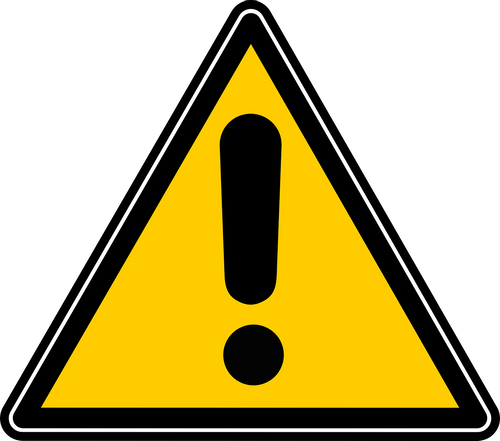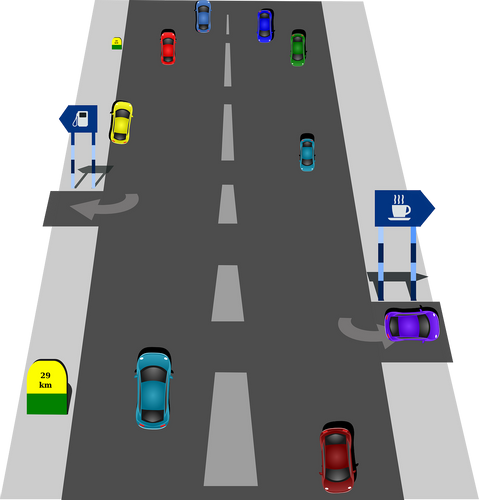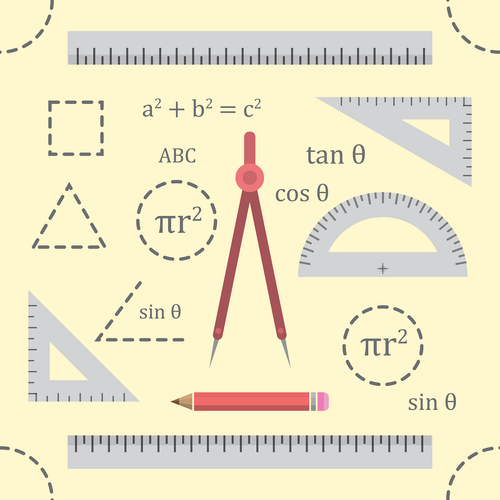Standards Packages
iTeh together with SIST has developed and compiled a comprehensive collection of standard packages to support your standard requirements. Our packages cover an array of content that includes quality management, risk management, road vehicles, machine safety, and much more. With over 200 packages to choose from, you are sure to find a collection to suit your standard needs.
Latest Standards
This document provides guidelines for the characterization of waterlogged archaeological wood to support decision-making processes for its preservation.
This document can be applied for the management of wood discovered in waterlogged environments, including terrestrial and aquatic (marine and freshwater) sites, as a basis for designing conservation strategies (e.g. reburial, in situ preservation, post-excavation storage). In the case of composite artefacts made of wood and other materials, this document is applicable only for the wooden components. Methods for conservation, site protection and monitoring for reburial as well as in situ preservation are beyond the scope of this document.
- Standard15 pagesEnglish languagesale 10% offe-Library read for1 day
This document is applicable to the heavy rail system.
This document defines the requirements for the provision, visibility, readability, maintenance and testing of a specific set of ERTMS trackside boards associated with the following DMI and ETCS track conditions:
— ETCS stop marker
— ETCS location marker
— level transition, corresponding to transitions between ETCS levels
— lower pantograph
— pantograph lowered
— raise pantograph
— neutral section announcement
— neutral section
— end of neutral section
— GSM-R network border marker
— no traction system fitted announcement
— no traction system fitted indication
— traction system AC 25 kV 50 Hz announcement
— traction system AC 25 kV 50 Hz indication
— traction system AC 15 kV 16,7 Hz announcement
— traction system AC 15 kV 16,7 Hz indication
— traction system DC 3 kV announcement
— traction system DC 3 kV indication
— traction system DC 1,5 kV announcement
— traction system DC 1,5 kV indication
— traction system DC 600/750 V announcement
— traction system DC 600/750 V indication
— activate the audible warning device (horn) indication
— safe stopping area announcement
— safe stopping area indication for start
— safe stopping area indication for end
— inhibition of brake announcement/indication for start/indication for revocation
— level crossing marker
NOTE 1 the brake MBs apply for any of the three brake types (eddy current, magnetic shoe, regenerative), whereas the exact type concerned would be known by the driver via existing Route knowledge.
The following ETCS track conditions are outside the scope of this Standard:
— Safe stopping area semi-continuous indication for in-between
— Non-stopping area announcement
— Non-stopping area announcement
— Non stopping area indication for start
— Non stopping area indication for end
— Non stopping area semi-continuous indication for in-between
— Close air conditioning intake announcement
— Close air conditioning intake indication
— Open air conditioning intake announcement
— Open air conditioning intake indication
This document includes the arrangement of the boards and their interface with existing systems (track, cab design including cab sight lines, visibility by the driver and train head lamps).
Mobile, backlit and temporary signs are not within the scope of this document.
The application of ERTMS trackside boards is not within the scope of this document.
Sighting requirements are not within the scope of this document. The sighting process needs to be implemented in accordance with national rules.
- Standard34 pagesEnglish languagesale 10% offe-Library read for1 day
IEC 62868-2-4:2025 specifies the safety requirements for rigid organic light emitting diode (OLED) tiles and panels for use on supplies up to 120 V ripple free DC for indoor and similar general lighting purposes.
- Standard13 pagesEnglish languagesale 10% offe-Library read for1 day
- Amendment5 pagesEnglish languagesale 10% offe-Library read for1 day
This document covers hinged/pivoted and sliding doorsets with engaging fasteners (e.g. latches, deadbolts) for pedestrian use. It defines the test methods to determine the forces to open/close doors and to engage/release and lock/unlock the building hardware using a key or handle. It is only applicable to the manual operation of doorsets.
These doorsets can include:
— emergency or panic exit devices;
— door closing devices.
NOTE The use of some windows involves engaging fasteners (e.g. latches, deadbolts) and can be tested in accordance with this document. Throughout the text where “door leaf”/”door leaves” is written this can also be read as “casements”/”sashes”.
- Standard17 pagesEnglish languagesale 10% offe-Library read for1 day
IEC 62878-2-603:2025 specifies the electrical test method to detect electrical connectivity defects of the stacked electronic module caused by the stacking assembly process to stack some stackable electronic modules. This method is realized to make use of bidirectional serial communication bus interface applied to the stackable electronic modules which are assured as "known good module" (KGM).
- Standard16 pagesEnglish languagesale 10% offe-Library read for1 day
This document specifies a procedure for the determination of the total mercury mass fraction of coal.
- Standard7 pagesEnglish languagesale 15% off
IEC 62037-1:2025 deals with the general requirements and measuring methods for intermodulation (IM) level measurement of passive RF and microwave components, which can be caused by the presence of two or more transmitting signals. The test procedures given in this document give the general requirements and measurement methods required to characterize the level of unwanted IM signals using two transmitting signals. The IEC 62037 series addresses the measurement of PIM but does not cover the long-term reliability of a product with reference to its performance. This third edition cancels and replaces the second edition published in 2021. This edition constitutes a technical revision.
This edition includes the following significant technical changes with respect to the previous edition:
a) added clarification that PIM generation is typically frequency dependent and noted that testing with swept or multiple fixed frequencies often provides more accurate results;
b) identified multi-port PIM analyzers as a possible test set-up topography;
c) added specification that test power level does not exceed the power handling capability of the DUT;
d) updated test specification to include missing parameters needed to properly define a PIM test;
e) added clarification that PIM test reports include the maximum PIM value measured over the test duration;
f) corrected error in Figure 3 that was erroneously changed in IEC 62037-1:2021.
- Standard19 pagesEnglish languagesale 10% offe-Library read for1 day
- Corrigendum4 pagesEnglish languagesale 10% offe-Library read for1 day
This document provides a collection of representative use cases of brain-computer interface (BCI) applications in a variety of domains: proposed medical and health, industrial controls, smart environment, etc. This document can be used for the development of potential standards, and it is valuable for a better comprehension of BCI. This document is also helpful for BCI industries and products that provide support for communications among interested parties and stakeholders. This document is applicable to all types of organizations (e.g. commercial enterprises, government agencies, not-for-profit organizations).
- Technical report108 pagesEnglish languagesale 15% off
This document specifies requirements for single use transfusion sets for use with pressure infusion equipment capable of generating pressures. It ensures compatibility with containers for blood and blood components as well as intravenous equipment. This document also provides guidance on specifications relating to the quality and performance of materials used in transfusion sets, to present designations for transfusion set components, and to ensure the compatibility of sets with red cell and plasma blood components. NOTE In some countries, the national pharmacopoeia or other national regulations are legally binding and take precedence over this document.
- Standard20 pagesEnglish languagesale 15% off
- Standard21 pagesFrench languagesale 15% off
This document specifies requirements for single use transfusion gravity sets for medical use to ensure their compatibility with containers for blood and blood components as well as with intravenous equipment. It also provides guidance on specifications relating to the quality and performance of materials used in transfusion sets, presents designations for transfusion set components, and ensures the compatibility of sets with a range of cellular and plasma blood components. NOTE In some countries, the national pharmacopoeia or other national regulations are legally binding and take precedence over this document.
- Standard15 pagesEnglish languagesale 15% off
- Standard15 pagesFrench languagesale 15% off
This document specifies the Gray-King coke method of assessing the caking power of hard coal under standard conditions.
- Standard15 pagesEnglish languagesale 15% off
This document specifies the requirements for the contact angle measurement of metallic hydrophobic thin film coatings deposited by the physical vapor deposition (PVD) method, including thermal evaporation, sputtering and ion plating. This document does not apply to non-metallic coatings, paints or varnishes.
- Standard7 pagesEnglish languagesale 15% off
- Amendment4 pagesEnglish languagesale 10% offe-Library read for1 day
This document specifies a method for the determination of reaction temperatures and times, enthalpies of reaction, and degrees of conversion using conventional differential scanning calorimetry (DSC) as specified in ISO 11357-1. The method applies to monomers, prepolymers, and polymers in the solid or liquid state. The material can contain fillers and/or initiators in the solid or liquid state. This document is not applicable to fast DSC as specified in ISO 23976.[ REF Reference_ref_2 \r \h 1 08D0C9EA79F9BACE118C8200AA004BA90B0200000008000000100000005200650066006500720065006E00630065005F007200650066005F0032000000 ]
- Standard10 pagesEnglish languagesale 15% off
- Standard10 pagesFrench languagesale 15% off
IEC 62282-3-202:2025 provides performance test methods specialized for the thermal and electrical characteristics of an energy management system to effectively share the heat and power of networked small stationary fuel cell power systems. These test methods are applied for each small stationary fuel cell power system. This document covers small stationary fuel cell power systems which can be complemented with a supplementary heat generator or a thermal storage system, or both, such as: - output: rated electric power output of less than 10 kW for each system; - output mode: grid-connected or independent operation or stand-alone operation with alternating current (AC) output not exceeding 240 V or direct current (DC) output; - operating pressure: maximum allowable working pressure of less than 0,1 MPa (G) for the fuel and oxidant passages; - fuel: gaseous fuel (natural gas, liquefied petroleum gas, propane, butane, hydrogen) or liquid fuel (kerosene, methanol); oxidant: air. This document does not apply to small stationary fuel cell power systems with electricity storage other than (small scale) back-up power for safety, monitoring and control.
- Draft44 pagesEnglish languagesale 10% offe-Library read for1 day
This document specifies the quality and safety requirements and test methods of Dioscorea opposita rhizome (dried rhizome of Dioscorea opposita Thunb.). It is applicable to Dioscorea opposita rhizomes that are sold and used as natural medicines in international trade, including Chinese materia medica (whole medicinal material) and decoction pieces derived from this plant.
- Standard10 pagesEnglish languagesale 15% off
This document specifies formats for redundant encoding and packaging of live segmented media (REaP). This document specifies: a) formats for Interchangeable Live Media Ingest and stream announcement; b) format and segmentation strategy to generate interchangeable segments; c) formats for generating interchangeable media presentation descriptions or playlists; d) formats for efficient cloud storage access and archiving of live segmented media. e) a protocol for communicating media descriptor files and fragmented media between encoders and packagers. REaP enables the following: 1) failover support and rejoining of distributed components in the workflow (see Annex E); 2) workflows for live with dynamic ad insertion (DAI) with a decisioning system. 3) workflows with digital rights management (DRM) and content protection. 4) Mixing file and live inputs. This document specifies additional constraint to formats defined in ISO/IEC 14496-12, ISO/IEC 23009-1, ISO/IEC 23000-19 and IETF RFC 8216.
- Standard32 pagesEnglish languagesale 15% off
- Amendment13 pagesEnglish languagesale 10% offe-Library read for1 day
Benefits

Full Standards Solution
Our catalog includes not only latest standards but also full meta information about related standardization project lifecycle.

Cost Effective
Our PRICE MATCH GUARANTEE policy with multi-level volume discounts gives our clients the best option in the market. In addition, you can get access to the standards for 3, 10, or 30 days.

Stay Notified
Get alerted to the latest revisions and new standards in the Weekly Newsletter. Standards are constantly changing. Don’t miss a revision that can impact your business.
About Us
iTeh Inc is a software development and IT consulting team of professionals who provide consulting, development and implementation of solutions for all types of businesses.
In cooperation, with the Slovenian Institute of Standardization (SIST), we create a unique solution that covers all aspects of the lifecycle of Standardization organizations. iTeh Standards is a part of the solution that helps SIST to provide and sell their products to Customers.
iTeh Standards Store is an evolving project, our goal is to build long-term relationships with our customers. We believe in delivering quality services to solve our customers' challenges and define success by exceeding our customers' expectations. We are always ready to listen and our experience allows us to provide our customers with helpful effective suggestions. You can contact us by email.
We are committed to providing the best possible experience for our customers.
Compliance with international standards is increasingly becoming one of the key competitive advantages in the global market. Our company creates all conditions for the most comfortable implementation of new documents and norms in the processes carried out by your organization. Some of the key advantages of working with us are:
- Cost-effective - multi-level discounts and permanent updates of the functions give our clients the best option on the market.
- e-Library - access to standards for a period of time of your choice. It is a cost-effective solution for keeping updated with the newest standards.
- Company-wide documents - create a company account and connect all employees with access to purchased standards, e-Library documents, and packages.
- All in one spot - all purchased standards are kept in one place with controlled access by the account administrator.
- Client-centric - providing quality consulting is the prerogative and incentive to create new products that accompany your success and scale.
- 24 / 7 client support
We are dedicated to building mutually beneficial and long-term relationships with our clients. That is why our team focuses on creating services to help our customers develop and achieve new productive results.
























